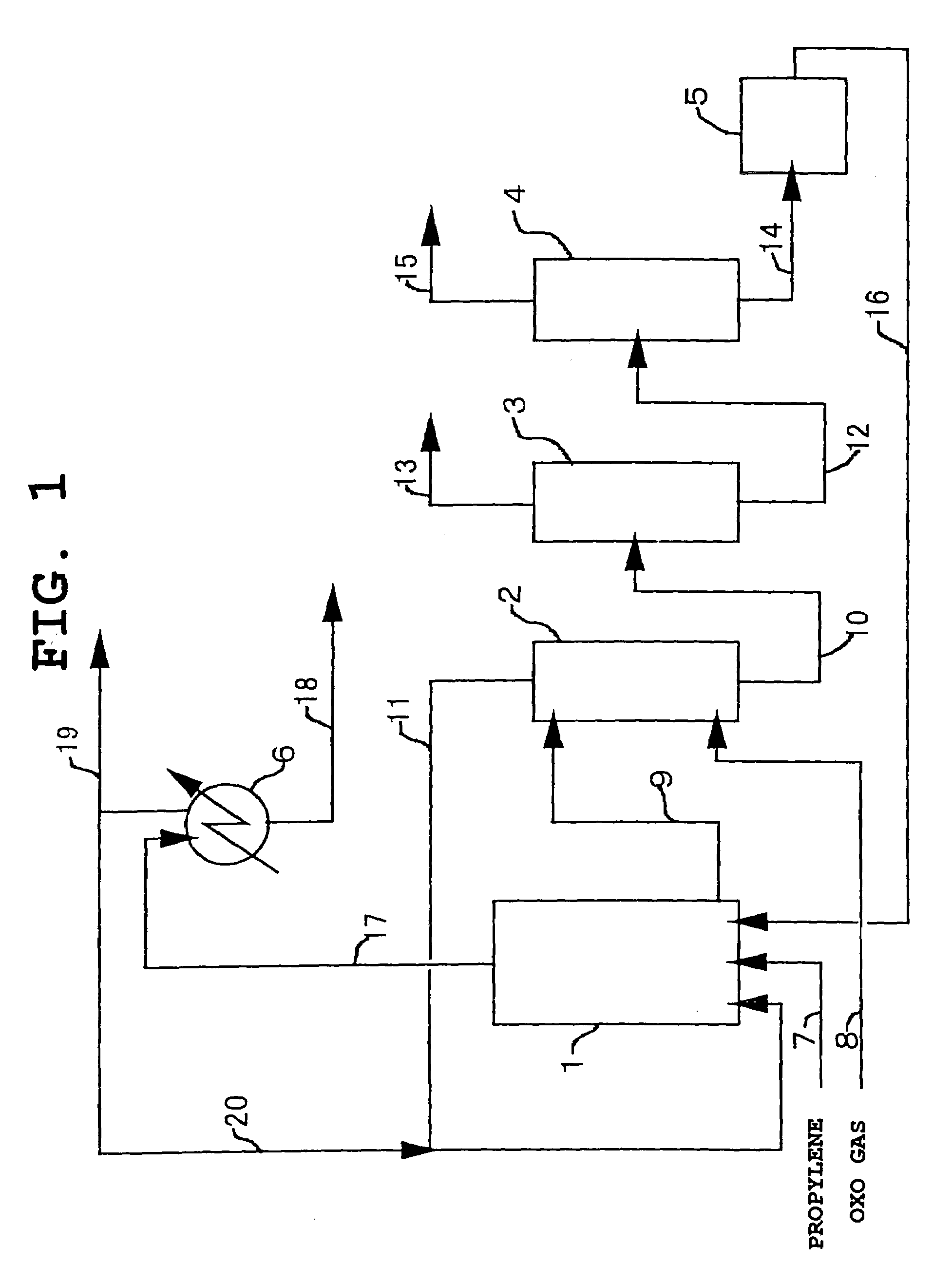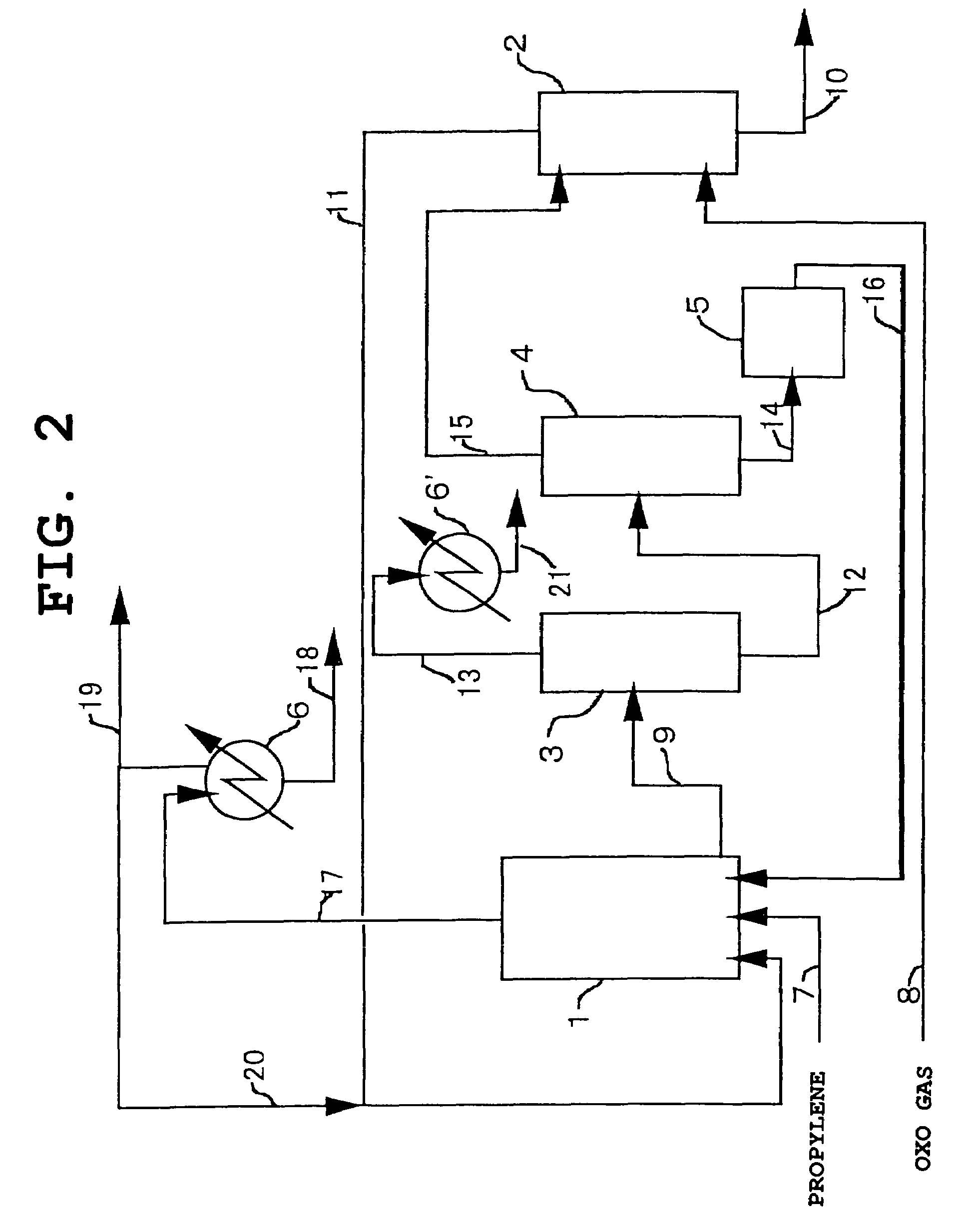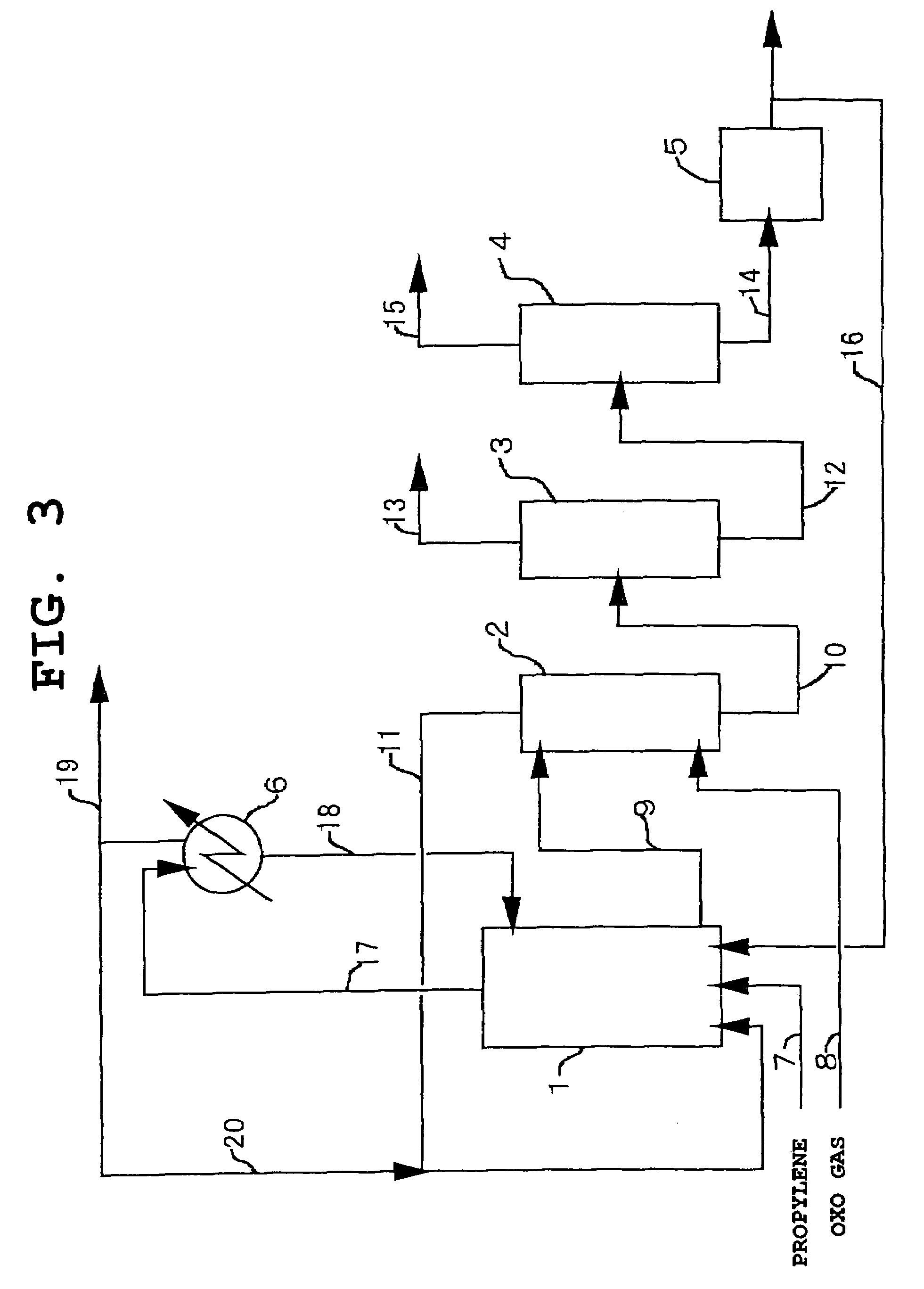Process of producing aldehydes
a technology of aldehyde and aldehyde ligand, which is applied in the direction of physical/chemical process catalysts, organic compounds/hydrides/coordination complexes catalysts, metal/metal-oxide/metal-hydroxide catalysts, etc., can solve the problems of adversely affecting the activity and stability of catalysts, the stability of phosphite ligand itself is problematic, and the need for new phosphite lig
- Summary
- Abstract
- Description
- Claims
- Application Information
AI Technical Summary
Benefits of technology
Problems solved by technology
Method used
Image
Examples
example 1
[0079]A hydroformylation reaction of propylene was carried out using an apparatus of FIG. 1. The reaction was carried out in the presence of a rhodium-bisphosphite based complex catalyst (Rh concentration: 500 mg / 1, P / Rh (molar ratio)=8). The following compound (1) was used as a bisphosphit ligand.
[0080]
(In the formula, tBu represents a t-butyl group, and -represents a methyl group.)
[0081]Propylene was continuously fed into the reactor 1 through the conduit 7, and a catalyst liquid was circulated and fed in an amount of 7,620 kg / hr through the conduit 16. Further, an oxo gas (H2 / CO=1.0) containing 0.4% by weight of water was continuously fed into the counter-current contact column 2 through the conduit 8 and after recovering unreacted propylene, was fed into the reactor 1 through the conduit 11. The reactor was kept at 90° C. and at a total pressure of 10 kg / cm2, and the feed amounts of propylene and oxo gas were adjusted such that the pressure of the reactor was kept at 10 kg / cm2. ...
PUM
| Property | Measurement | Unit |
|---|---|---|
| Temperature | aaaaa | aaaaa |
| Temperature | aaaaa | aaaaa |
| Fraction | aaaaa | aaaaa |
Abstract
Description
Claims
Application Information
 Login to View More
Login to View More - R&D
- Intellectual Property
- Life Sciences
- Materials
- Tech Scout
- Unparalleled Data Quality
- Higher Quality Content
- 60% Fewer Hallucinations
Browse by: Latest US Patents, China's latest patents, Technical Efficacy Thesaurus, Application Domain, Technology Topic, Popular Technical Reports.
© 2025 PatSnap. All rights reserved.Legal|Privacy policy|Modern Slavery Act Transparency Statement|Sitemap|About US| Contact US: help@patsnap.com



